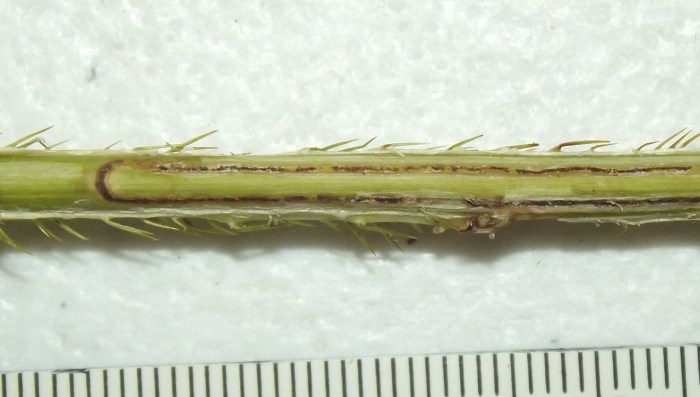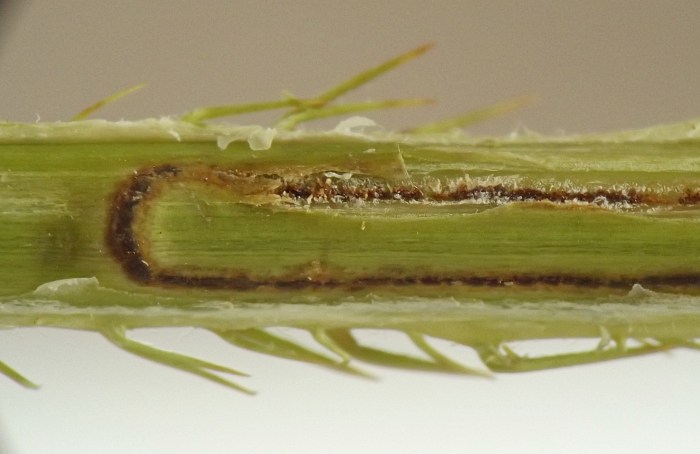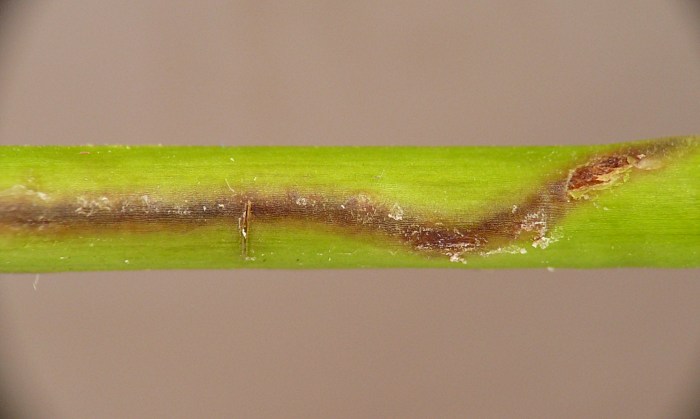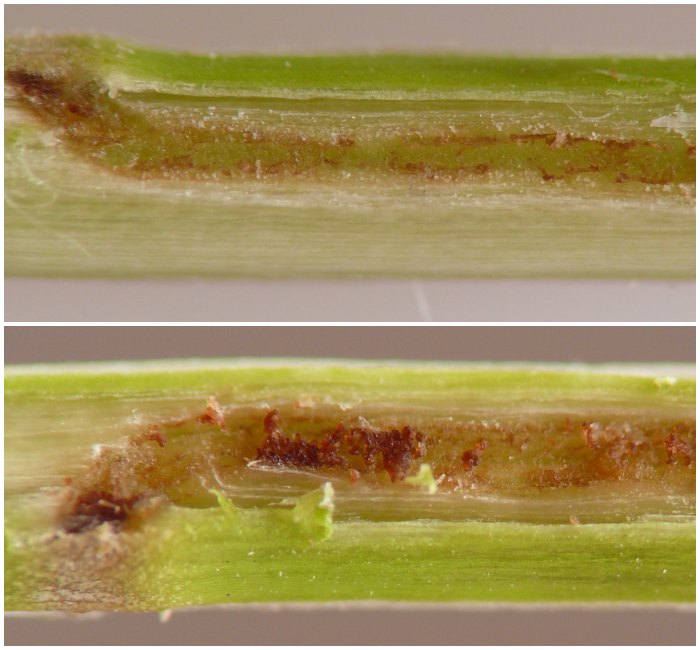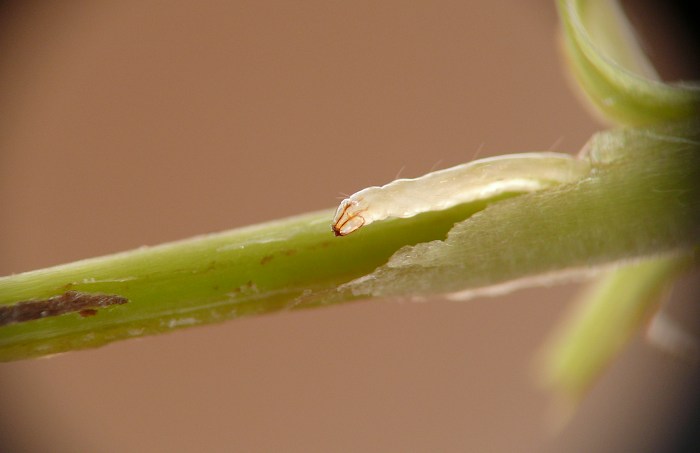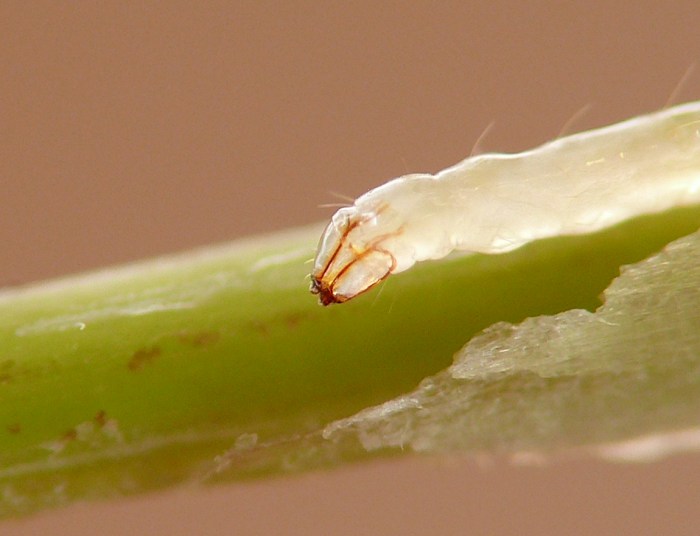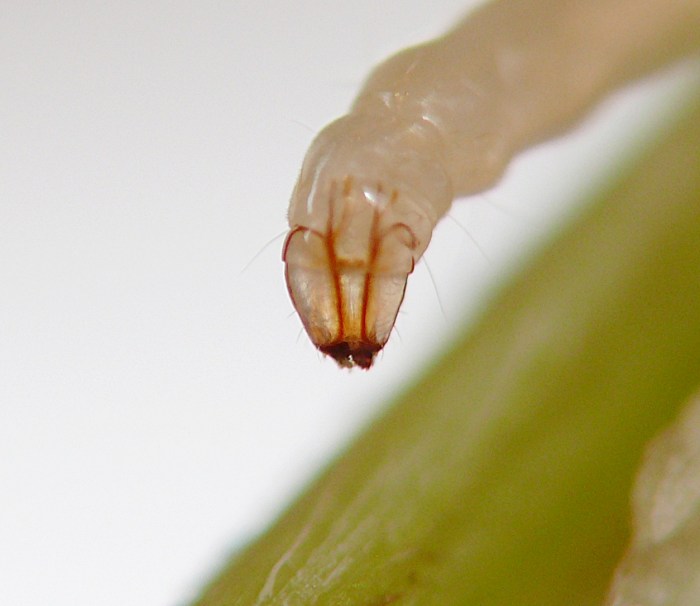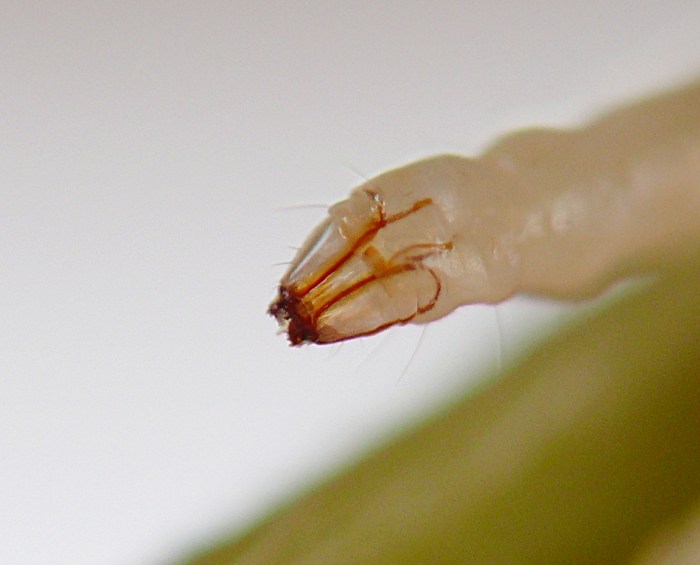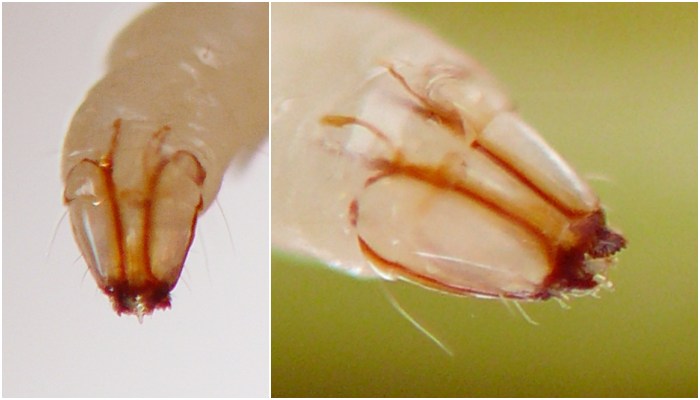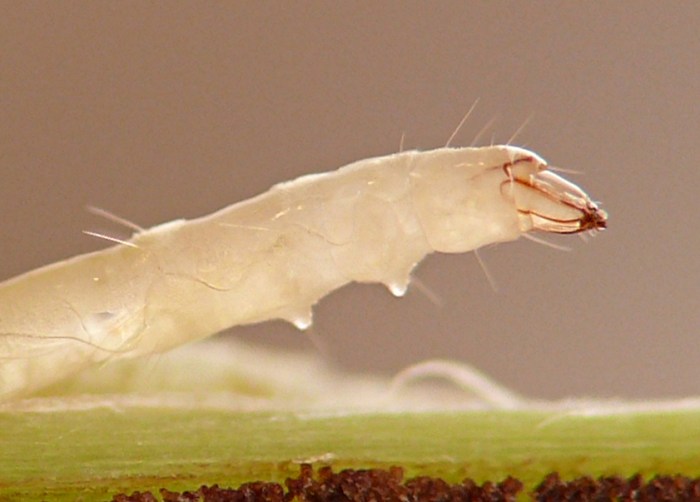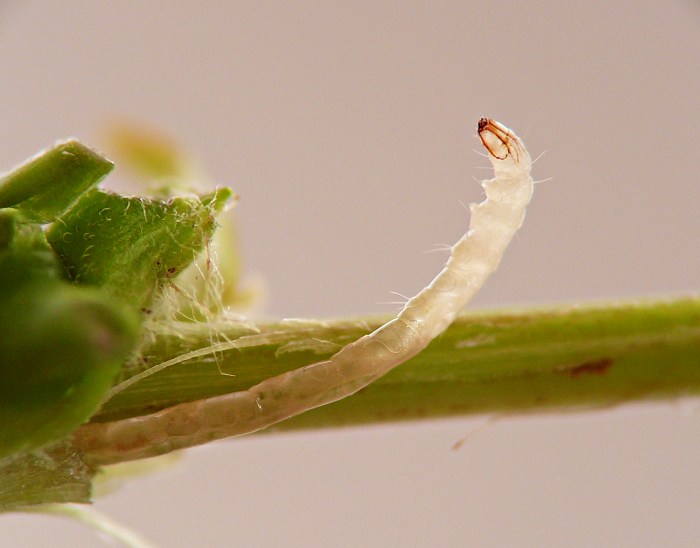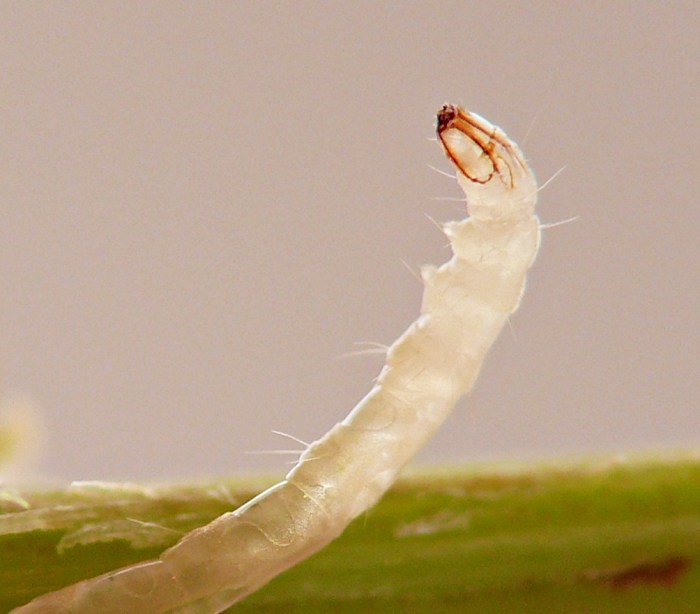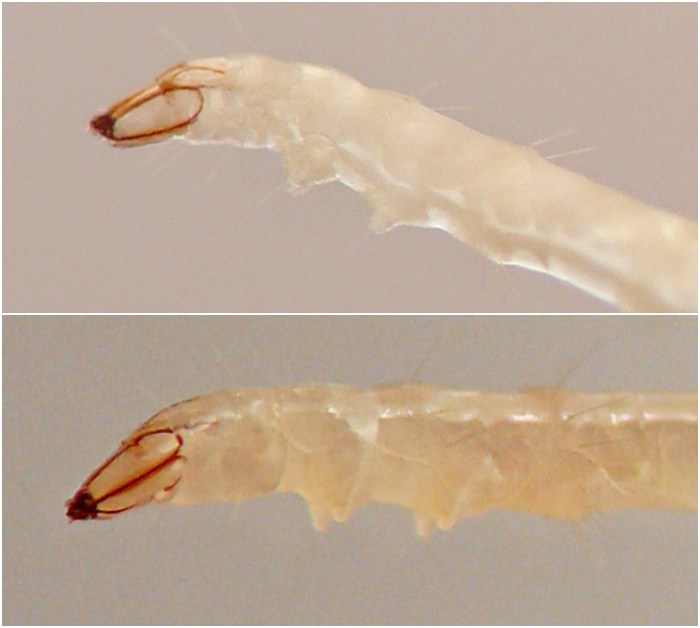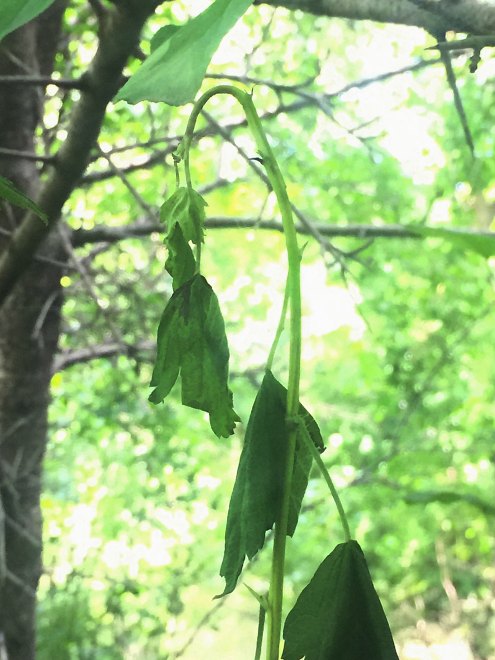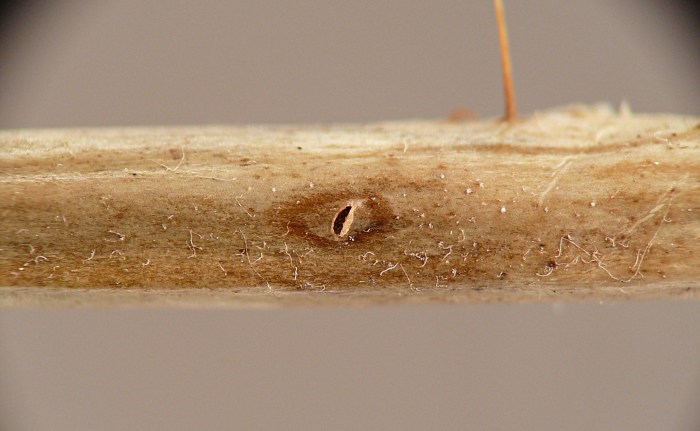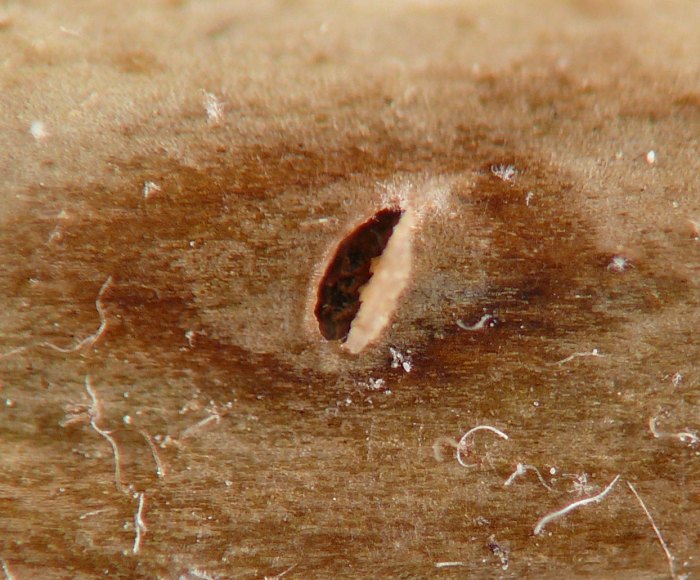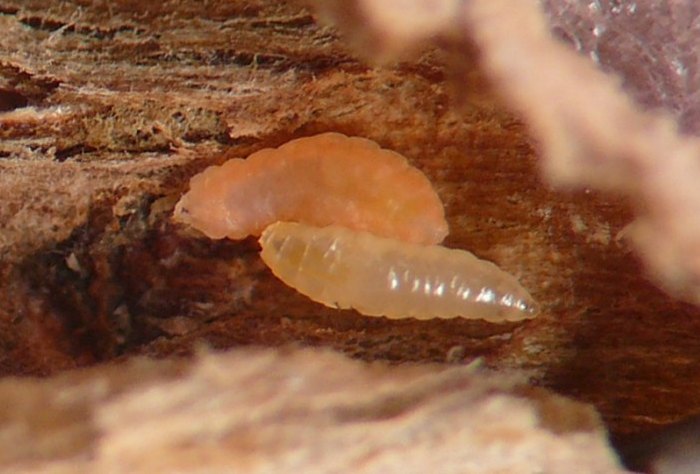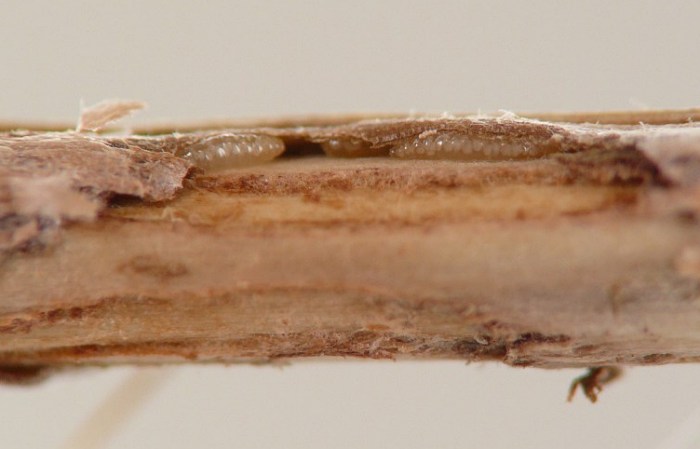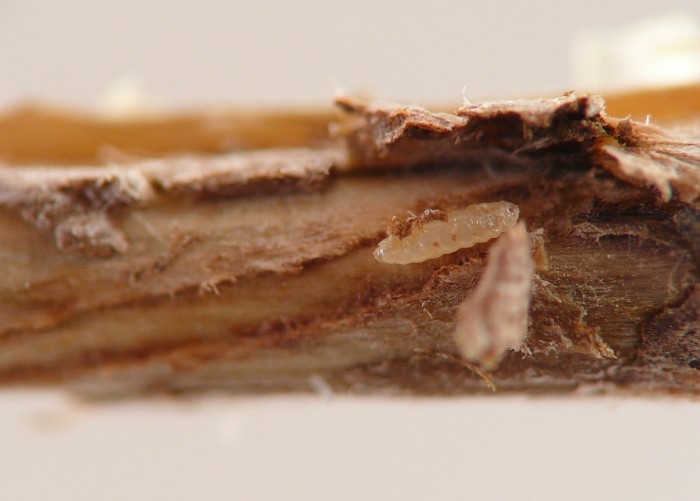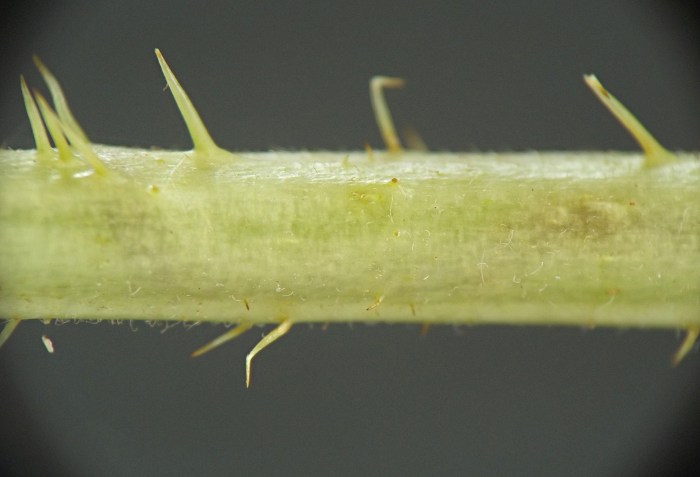Stem miner (Lepidoptera: Opostegidae) in Ribes [0445]
| Order | Lepidoptera |
|---|---|
| Family | Opostegidae[T] |
| Lower taxon | Opostegoides scioterma |
| No. spp. involved | One confirmed |
| Feeding mode | Stem miner |
| Host plant | Gooseberry, Ribes sp. (Grossulariaceae) |
The life history of this moth was first reported in detail by Grossenbacher (1910), from whom some of the information in the following account is drawn. In Grossenbacher's publication the insect is identified as Opostega nonstrigella (a moth currently known as Pseudopostega albogaleriella) based on a determination made by A. Busck. This identification was in error; the correct identification for the so-called "gooseberry barkminer" is Opostegoides scioterma (Davis and Stonis 2007; van Nieukerken 2016-2024). Complicating matters, some references have evidently confused the erroneous identification O. nonstrigella with the name of another moth, Pseudopostega quadristrigella, leading certain sources (such as iNaturalist, as of early August 2024) to refer to P. quadristrigella as the "gooseberry barkminer." Again, the correct identification for the Ribes feeder is Opostegoides scioterma.
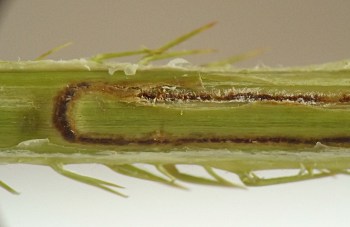
The larva of this moth forms a looping elliptical tunnel under the outermost layers of the hostplant's stem tissue. Upon maturing in June, the larva abandons the stem via a semicircular exit slit and drops to the ground, where it spins a brownish cocoon (Grossenbacher 1910). Around this time or shortly after, usually by late June, some affected stems will wilt and/or develop a browned necrotic area that covers several centimeters up from near the lower turn of the larva's tunnel. Removing the bark of such a browned area will sometimes reveal cecidomyiid larvae within or adjacent to the tunnels recently abandoned by the opostegid larva. The exact nature of the relationship between the cecidomyiid and the opostegid is unclear, but Grossenbacher (ibid.) found a fungus associated with the cecidomyiid and believed the semicircular exit slit of the opostegid was the weak point that allowed invasion by both the fly and the fungus. R.J. Gagné (pers. comm.) examined photos of the cecidomyiid larvae from the current study and noticed morphological variation that he suggested could possibly be explained by two different cecidomyiid species being present, but this could not be determined with certainty from the photos that were shared with him.
Most of the O. scioterma adults observed by Grossenbacher emerged from cocoons between 2 and 10 July. His initial discovery of this moth involved the finding of larvae of different sizes in mid-May, mining both in new shoots and in the transition point between the new shoot and the previous season's growth. Some larvae he found in the upper parts of the new shoots at that time were only about 3mm in length, while those near the bases of the shoots were larger. From this he concluded that adults and/or some pupae lived through the winter and adults oviposited from April through mid-May, with the earliest eggs giving rise to the largest larvae near the bases of the new shoots by mid-May.
However, Davis and Stonis (2007) point out that "adult records of O. scioterma do not support an early spring oviposition (i.e., flight) period" (p. 11). Furthemore, evidence from the current study suggests opostegids on Blephilia, Mentha, and Monarda (Pseudopostega spp.) often overwinter as middle-instar larvae in perennial belowground tissue of the hosts. Finally, in a paper describing life history details of Opostegoides minodensis on Betula in Japan, Hara and Yahagi (1990) summarize the results of Kumata (1984) by stating, in part, "it is presumed that [individuals of this moth] overwinter as young or middle-aged larvae" (p. 284; trans. ed. E.J. van Nieukerken). Thus it seems reasonable to suppose that some individuals of O. scioterma could follow the pattern of other species in the family and overwinter as early- to middle-instar larvae. Since Ribes is a woody perennial, the overwintering location could be the previous season's aboveground canes, from which larvae could migrate into the bases of new shoots in spring. Further investigation would be needed to assess this hypothesis.
Update, 2025: On June 9, JvdL located a Ribes shoot with very subtle raised areas and discoloration indicating the shoot had been tunneled by an O. scioterma larva. The shoot was dissected and the larva found just below a small externally visible discolored area that may have been the beginnings of an exit tunnel. After being photographed, the larva was reintroduced to a section of Ribes stem, where it remained until early on June 11, when it was found crawling on the bottom of the rearing container. It was then transferred to a small vial with moistened potting mix, into which it quickly burrowed, as if in preparation for building a cocoon.
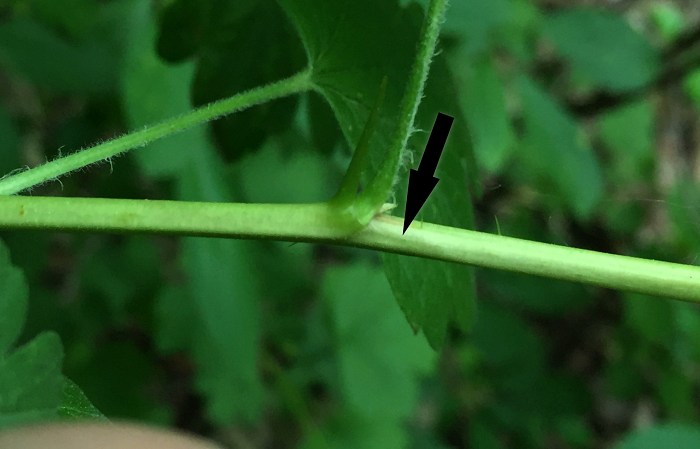
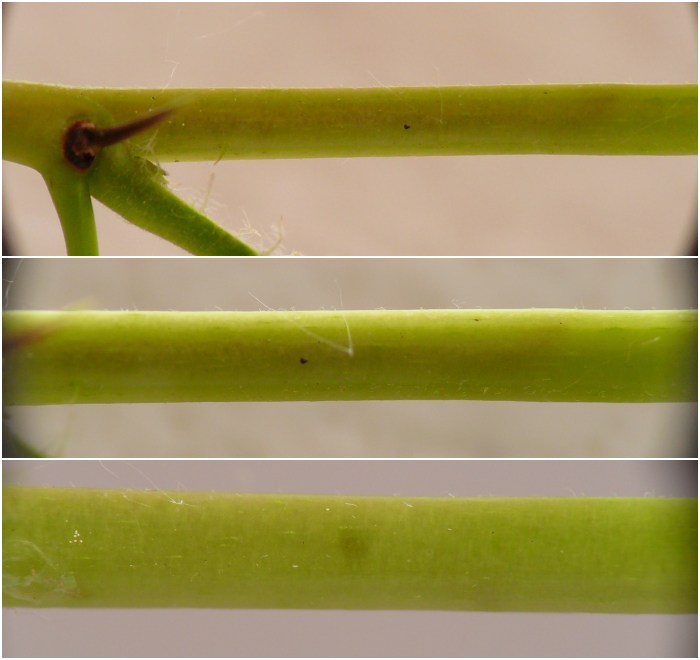

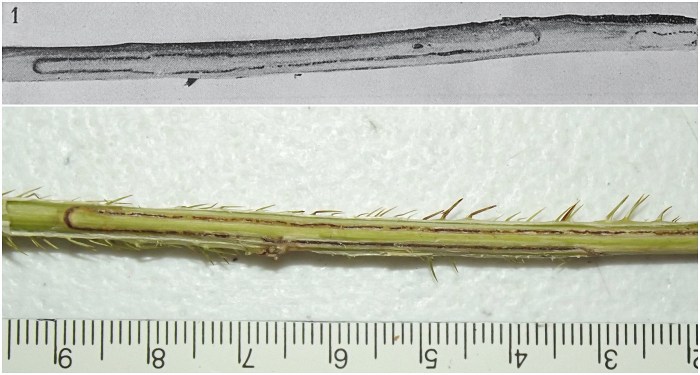
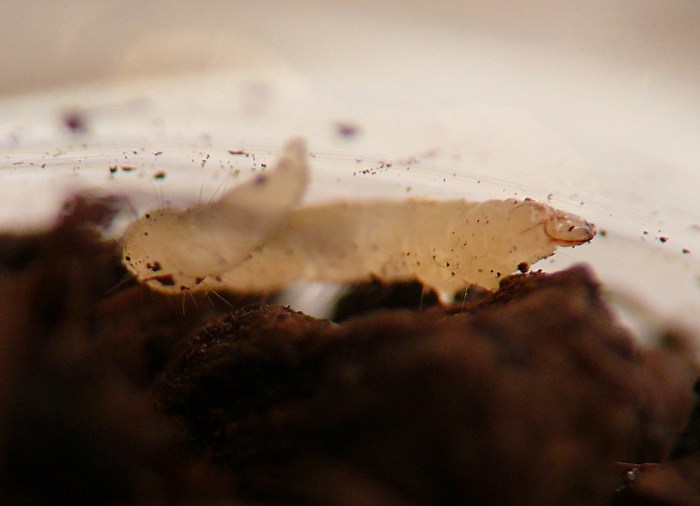
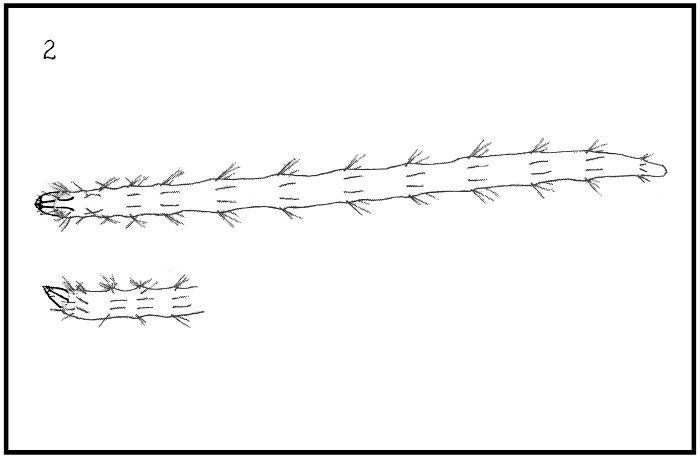
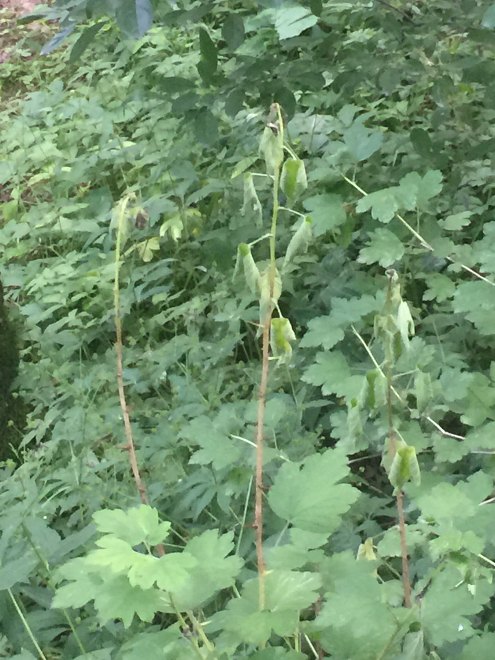

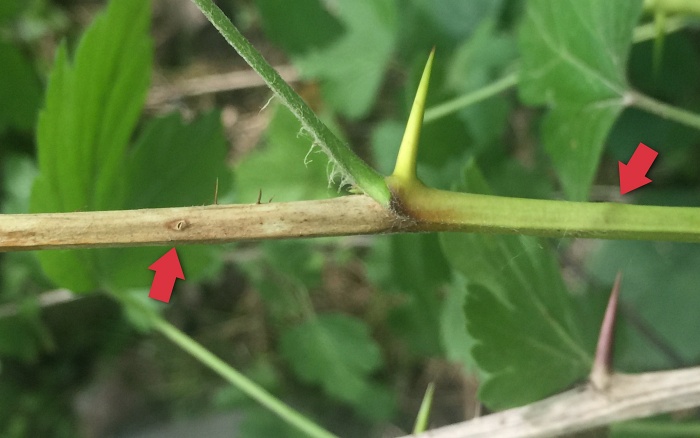
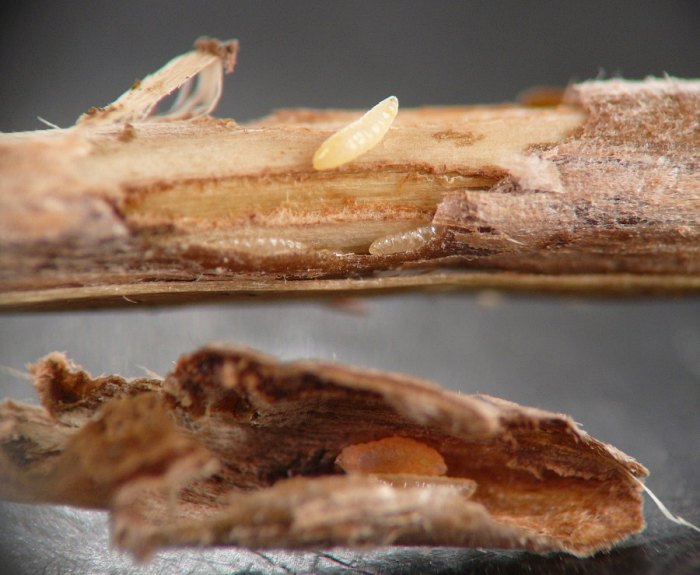
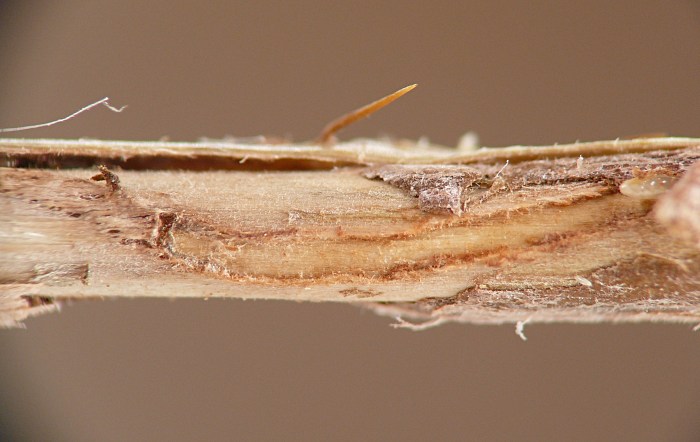
Specimen data for images
Field photo taken 06/29/24 (01); coll. 06/23/24, field photos same day (02-05), additional photos same day (06-14, 18-19); coll. 06/24/22, photo same day (22); coll. 06/25/23, photos same day (15 - bottom panel, 17, 21); public-domain photo by J.G. Grossenbacher (1910, fig. 1 in plate II), with figure number rearranged (15 - top panel); adaptation of public-domain camera lucida drawing by J.G. Grossenbacher (1910, fig. 2 in plate II) (20); coll. 06/09/25, field photo same day (23), additional photos same day (24-38), wandering larva photographed on 06/11/25 (39).
All specimens above from the Upper Midwest, USA, except those shown in image 0445-20 and in the top panel of 0445-15, which are from the Hudson River valley, USA, found by J.G. Grossenbacher circa 1907-1910.
References
Davis, D.R. and J.R. Stonis. 2007. A revision of the New World plant-mining moths of the family Opostegidae (Lepidoptera: Nepticuloidea). Smithsonian Contributions to Zoology no. 625, 212 pp., 503 figs., 19 maps, 2 tables.
Grossenbacher, J.G. 1910. Medullary spots: a contribution to the life history of some cambium miners. New York Agricultural Experiment Station, technical bulletin no. 15 (Nov. 1910), pp. 49-65.
Hara, H. and T. Yahagi. 1990. Notes on the oviposition sites and larval mines of Opostegoides minodensis (Kuroko), a cambium-miner of Japanese white birch. Japanese Journal of Applied Entomology and Zoology 34: 283-287. (English translation edited by E.J. van Nieukerken)
Kumata, T. 1984. Insects forming pith flecks in broad-leaved trees. Northern Forestry 36: 120-129. (NOTE: relevant results of this publication were summarized in Hara and Yahagi (1990) (see above), but were not directly consulted in the creation of the current report.)
Nieukerken, E.J. van (ed.). 2016-2024. Nepticulidae and Opostegidae of the world, version 2.0. Scratchpads, biodiversity online. Retrieved July 25, 2024 from http://nepticuloidea.info/.
Page created 07/14/24. Last update: 06/13/25




